What Is Clone Phishing: How it Works, Examples & Defenses
Clone phishing is a growing threat to businesses and consumers. These look-a-like messages can be downright convincing, and it takes the right technology and know-how to stop clone phishing attacks from succeeding.
Not sure what clone phishing is or how it works? Don’t panic. You’ve come to the right place.
Below, we’ll walk you through everything you need to know about clone phishing, including what it is, how it works, and real-life clone phishing examples.
What Is Clone Phishing?
Clone phishing is a phishing technique that copies the look, feel, and content of a legitimate message to gain the recipient’s confidence. Often, a clone phishing email is nearly indistinguishable from an authentic one.
However, the attacker will alter small details, like pointing links to a phishing site or adding a malicious attachment. Although these messages can be very convincing, defenses exist for organizations that want to mitigate the risk of clone phishing attempts.
Below, we’ll give you an in-depth view of how attackers conduct clone phishing. Then, we’ll provide you with tools and strategies for protecting yourself from it.
Clone Phishing Red Flags
Before we get started crafting a realistic attack and exploring clone phishing defenses, let’s take a quick look at indicators of a clone phishing attempt.
The table below details common signs an email is a clone phishing attack and can serve as a quick reference to consult when developing a mitigation strategy.
Indicator | Description |
|---|---|
Mismatched hyperlinks | Mismatch between hyperlink text and the domain the link points to. |
Illegitimate sender domain | Domain used by the sender isn’t the authentic domain for the organization they claim to be from. |
Content that invokes a sense of urgency | A sense of urgency or other pressure tactics to get you to act quickly without closely analyzing details. |
Email client warnings | A warning from your webmail provider or antiphishing software that the email is suspicious. |
None of these red flags are foolproof detection techniques on their own. Many clone phishing attacks won’t feature any sort of urgency. Or they might come in tandem with a DKIM replay attack, allowing them to spoof the real domain of the sender.
However, these strategies will at least give you tools to identify the majority of clone phishing emails that you receive.
Later in the article, we’ll look at defenses you can apply to protect you from clone phishing emails even if you personally don’t detect every single one. For now, we’ll begin by examining what an actual clone phishing attack actually looks like.
Clone Phishing Attack Examples
The best way to understand clone phishing is to see how an actual attack works. Therefore, in this section, we’ll craft a clone phishing email example using the same tactics hackers use. Then we’ll send it and see how it looks from the recipient’s perspective.
Let’s get started!
Cloning a Legitimate Email
First things first, we’ll need a legitimate, trustworthy email to clone. I’ve created a ticket through Valimail’s free support web interface, which also creates an email thread. Here’s the email I received:
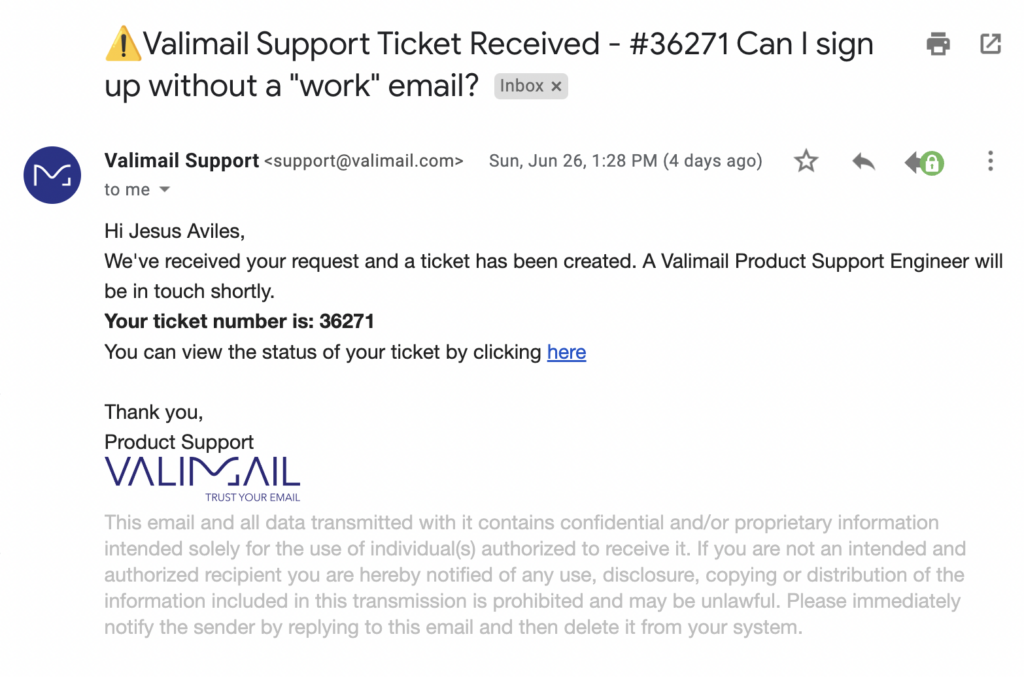
Immediately, we see elements of this email that we can copy to create a convincing clone.
- Visible
From:address - Gmail profile picture
- Subject and content
- The HTML formatting
Let’s work through them in order.
In the visible From: address, we see support@valimail.com. We could forge this address directly, but Valimail’s domain is protected by DMARC, so there’s a good chance that our email would end up in spam if it arrives at all.
But we can buy a domain that looks similar enough that our target won’t notice the difference. For example, if we replace the letter m with two n’s, we get valinnail.com.
If we look it up on Namecheap, we see it’s available. Even if it weren’t, we could easily concoct another such domain that looks similar.

Armed with our new domain, we can set up Gmail for it by following the instructions provided by Google using their documentation: Activate Gmail with Google Workspace.
Now we can log into Workspace and create a user named “support.” Just copy over the profile picture, and we’re ready to start working on cloning the content!
Platform | Success Rate | Success Rate Frame | Estimated FTEs | Maintenance | Marketplace Apps Identified |
|---|---|---|---|---|---|
DIY Manual | 20% | 12+ Months | 2-3 | Never ending | ~100 services |
Outsourced Manual | <40% | 9-12 Months | 1-2 | Never ending | ~100 services |
Valimail Automation | 97.8% | 0-4 Months | 0.2 | Automated | 6,500+ |
This is the easiest part – we can just copy and paste the content from the email, and it will copy all of the styling and HTML – including links.
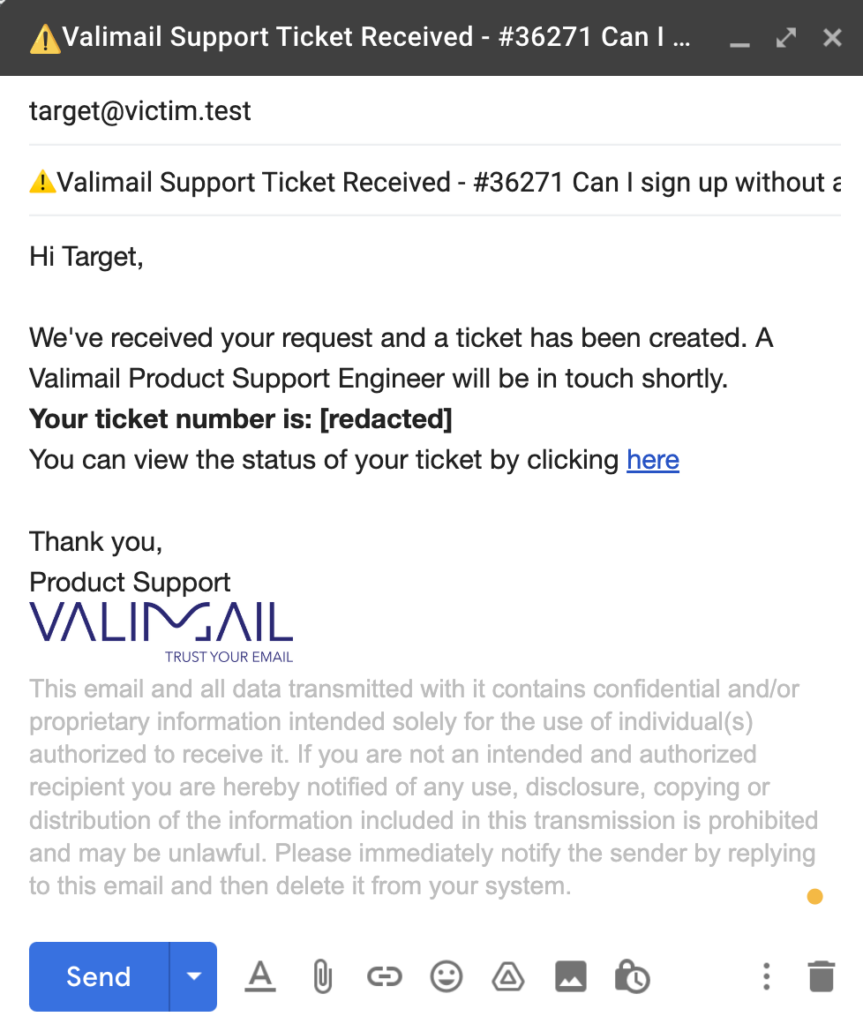
Now that we have an account that impersonates Valimail, along with HTML content cloned from a legitimate Valimail support email, we’re ready to maliciously alter the content.
Adding Malicious Content
The email contains a link to a support thread. If the client is a Valimail customer and receives this email, they’ll likely think that there’s a problem with their account and click the link to open the support ticket. So let’s change the link to point to our own domain.
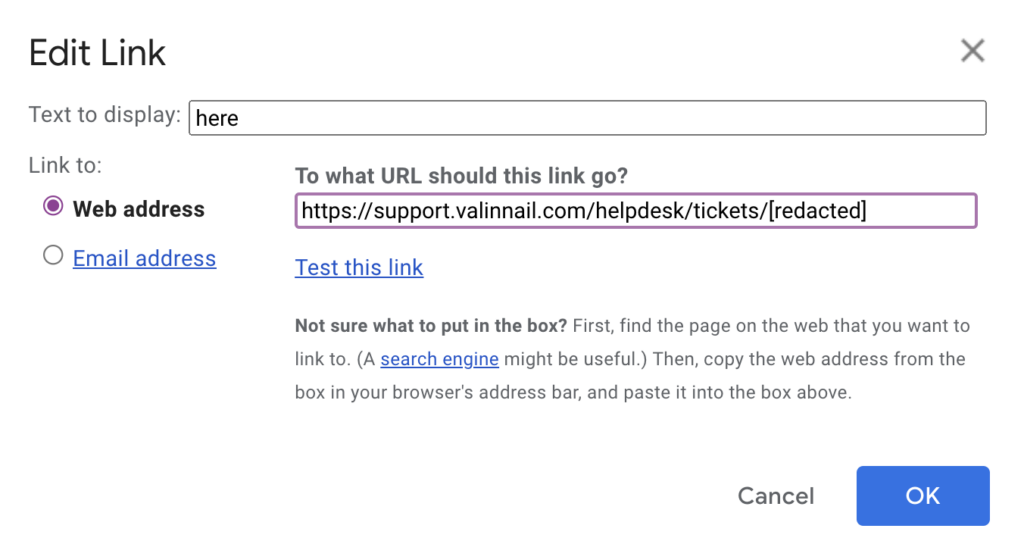
Notice that we’ve altered the domain name to use our double ‘n’ lookalike. From here, we could set up a phishing page at that URL and send the email off to our victims.
From the attacker’s perspective, phishing is a numbers game. Therefore, in a real clone phishing attempt, we’d likely target hundreds or even thousands of Valimail customers as part of this clone phishing attack.
Launching the Clone Phishing Attack
Finally, let’s look at how the final email looks in the recipient’s inbox.
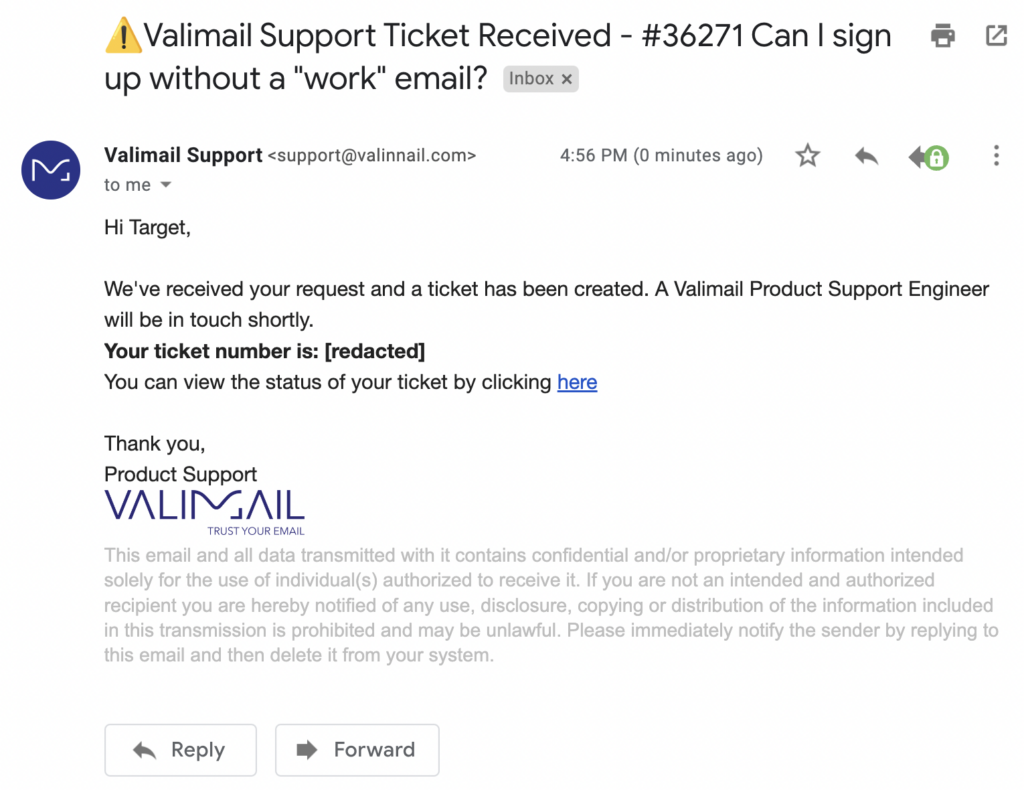
Would you notice that the domain has a double ‘n’ instead of an ‘m’? This email doesn’t end up in spam, so you only have two clues in this case: the domain in the visible From: address is wrong, and the hyperlink points to a phishing domain.
3 Ways to Defend Against Clone Phishing Attacks
Clone phishing attacks are pretty sneaky. Fortunately, there are ways for you to protect yourself.
Now that you have a better idea of what clone phishing is and how the attack itself works, we can move on to actually defending yourself and others in your organization from becoming victims of this attack. Like most varieties of phishing, there is no single foolproof defense that makes you immune.
However, the tactics below will lower the odds of an attacker carrying out a successful clone phishing attack under your watch.
1. Multi-Factor Authentication (MFA)
MFA refers to the practice of requiring more than one method of authentication. For example, in addition to requiring a password, a web page might send you a special code via text message to enter before logging in.
This is great for security because it means that your account is still safe even if your password leaks to hackers. In the context of phishing, however, it’s not perfect. A dedicated attacker can simply phish the MFA code in addition to the password when you click the link.
So while this doesn’t prevent phishing entirely, MFA makes things more challenging and complicated for the attacker.
2. Phishing Awareness Campaigns
You should train employees and team members in your organization to recognize common signs of phishing, including advanced phishing techniques like clone phishing. Written training materials like this article are a great start.
However, you can go further by setting up periodic, simulated phishing campaigns. These internal phishing tests give you an idea of how your team would react to a real phishing attack.
With this information, you can figure out which kinds of attacks worked best against your team and focus on educating against that attack specifically. You can also identify which employees fell for the attack and offer them more personalized phishing awareness and defense training.
3. Anti-Phishing Software
Diligence is important, however, there are limitations to the diligence you can realistically expect from all users. And it only takes one user to slip up for a breach to occur.
Vendors offer automated software solutions to compensate for this gap and perform some of the work for you. For example, the Netcraft extension for Chrome:
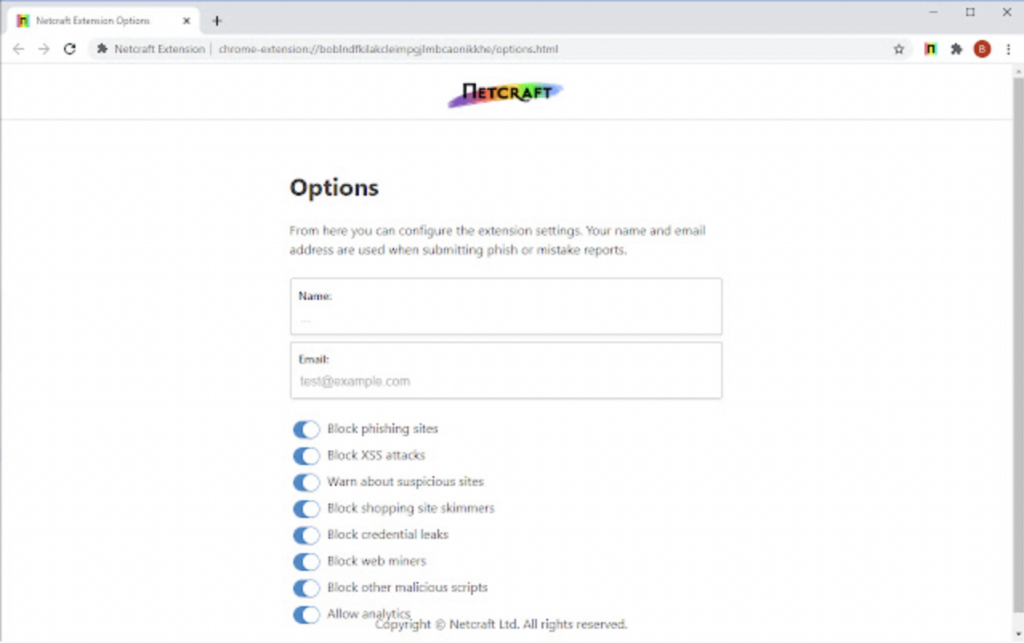
Commercial anti-phishing solutions tend to integrate with specific providers. For example, Office 365 offers enterprise anti-phishing services that are top-notch. Check what options are available for the platform you use in your organization and see if it fits your needs.
Protect Your Business from Clone Phishing
Phishing is a scourge that both large and small organizations must grapple with if they wish to survive in the modern digital economy. According to a 2022 report from CyberTalk,
“Thirty-percent of phishing emails are opened. This increases the probability of an individual unintentionally clicking on a malicious link or downloading a compelling-looking document that’s laced with malware.”
– Phishing attack statistics 2022, CyberTalk
As we’ve learned in this article, clone phishing is a particularly pernicious form of phishing due to the attention to detail put into each clone phishing email. Clone phishing attacks are likely to copy as many details from a legitimate email as possible, making it as hard as possible for you to discern a phishing email from the genuine original.
Detecting phishing of any kind is hard, but you can beat clone phishing attacks. You should universally apply Multi-Factor Authentication, meticulously review links and domains before trusting them, and diligently apply antiphishing software across your organization.
With these strategies in place, you can greatly reduce your risk of becoming a victim of a phishing attack.

